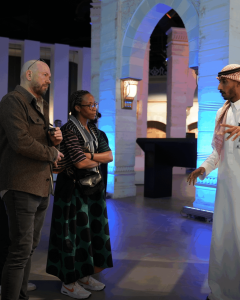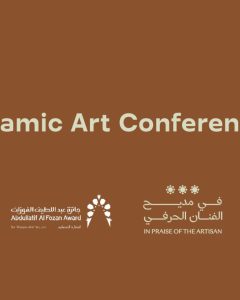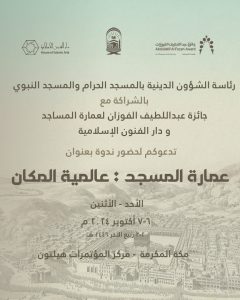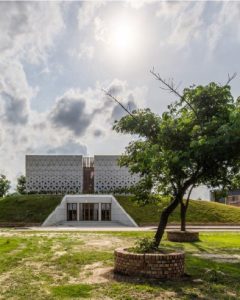Admittedly, the visual identity of mosque allocations has imprisoned any ideological or professional renovation attempt. This discrepancy stood beyond the designers’ intuition, to get over the claimed sanctity of the historically enforced identity. Therefore, the renovation wave has targeted these areas in the first place. The named ideological jail is termed as such, for its influential supremacy regarding the Muslims’ mindset, and their belief that mosques cannot be identified without copying their historic architectural form. Consequently, several ideological restrictions have been applied to Mosque Architecture, leading to generating many repeated or rather cloned Mosque Forms of the historic ones. The Award does not reject these forms; however, it investigates the conception of the Futuristic Mosque Architecture, which addresses the contemporary and future technicality and ideology. Lamentably, the nomination phase of the participant mosques has been devastating; especially in Egypt and North Africa; but for some exceptions. The nomination phase has not been simple, due to the absence of innovative Mosque Designs.
The discrepancy is not all about the wide spread historic style; as several noteworthy historic mosque styles have been found out to be professional. These distinguished mosques are of a highly historic Form; as well as a contemporary function, which define the time in which they have been built. On the contrary, these cases are of limited number in Egypt and North Africa, despite their Mosque Architecture history. Besides, Muslims right there look up to mosques, and involve them in their daily routine. Accordingly, these places are not able to employ the conception of Futuristic Mosque Architecture. For instance, the squarely projected minarets; as a mosque identification factor; are indispensable in Tunisia, Algeria and Morocco. No wonder, being a jury member of La Grande Mosquée d’Alger ;The Great of Algiers design contest in 2008; I have been surprised that the all of the submitted recommended designs have applied this factor to their designs with slight historic different details.

Thus, it must be acknowledged that past experience influenced designs result in cloned mosque designs that lack adaptability and compatibility with the modern ideas and forms. Undoubtedly, mosques will not represent their age, due to absence of creativity and innovation. The nominated mosques must incarnate the ideological and professional perception of mosques, for their symbolic worth in the Muslim commonsense. Mosque Architecture has been recently stuck between sustaining its historic form, and representing the real challenge facing the Muslim communities. The ideological stagnation of Mosque Architecture is out of the traditional Mosque Form undeserved sanctity; thus, any revolutionary attempt seeking renovation is charged of norm infringement.
This conflict is quite notable in Egypt. A distorted historical ambience haunts the mosques right there. Earlier, the Mamluk style influenced Mosque Forms, hence, it is difficult to get separated from it. Nowadays, there is a wide variety of hybrid deformed styles, which neither validate the historic style, nor innovate a contemporary counterpart. Nonetheless, some attempts are credited for rediscovering the local knowledge and technicalities, employing them in a contemporary style . In my own perspective, this strategy is somehow promising, for Egypt can add to the field locally and internationally.
Eventually, it is crystal clear that Mosque Architecture in Egypt and North Africa is lagging behind, in consideration of their domination, but for La Grande Mosquée d’Alger. The mosque has developed an outstanding edifice size and functions. This reluctance has been characteristic in those sites of a former Mosque Architecture civilization. Thereby, Turkey could not unshackle its Mosque Form from the Ottoman grip. By contrast, those areas of novice Mosque Architecture history have made it better. It seems that the nominated mosques in this cycle can mirror the intellectual set up that guides the production of architecture in Islamic countries, and this is a very important step, to understand the future of mosque architecture in the world.





